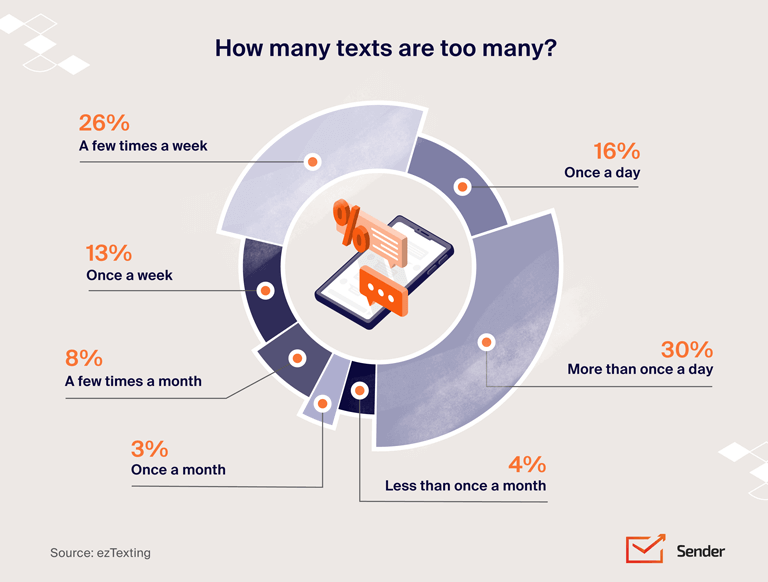
SMS marketing can be a powerful tool for ecommerce businesses. According to recent surveys, 98% of text messages are opened and read within minutes, compared to the 20-30% open rate for emails. With such high engagement, it’s no wonder SMS marketing is growing rapidly. However, with great power comes great responsibility—you need to be strategic with your SMS marketing to see success.
One of the most crucial components of an effective SMS strategy is your sending schedule. Finding the optimal cadence and send times can significantly impact your open and click-through rates. In this article, we’ll explore how often you should send SMS campaigns, the best times to send messages, and tips for creating the ideal SMS schedule for your business. Let’s dive in!
How Often Should You Send SMS Marketing Campaigns?
When launching SMS marketing, one of the biggest questions is: how often should you send messages? You want to send frequently enough to stay top of mind with subscribers but not so often that you annoy them. Here are some best practices for SMS cadence:
- Limit promotional sends to 1-2 times per week: Sending more frequently risks opt-outs and irritation.
- Send cart abandonment reminders within 1 hour of abandonment: Timeliness is key for recovering lost sales.
- Use SMS sparingly for announcements and shipping confirmations: These are timely notifications, not ongoing campaigns.
- Avoid sends on major holidays: Prevent messages from getting lost in the shuffle.
- Always honor opt-out requests immediately: Never spam subscribers who have asked to disengage.
The ideal cadence will depend on your industry, subscriber base, and business goals. Test different frequencies to see what resonates best with your customers and monitor opt-out rates to avoid overdoing it.
What Are the Best Times to Send SMS Campaigns?
Timing is just as important as frequency in SMS marketing. Ensure your messages are received when subscribers are most likely to engage. Consider these key points on timing:
- Avoid early mornings and late evenings: People are unlikely to be shopping at these times.
- Lunchtime (11am – 1pm): Especially effective for restaurant/food brands.
- Evening (6pm – 9pm): Great for reaching people making dinner plans or relaxing after work.
- Sunday afternoons: Ideal for meal kit and grocery delivery messages.
- Mondays and Tuesdays: Tend to perform better than late weekdays.
- Fridays: Statistically the worst day for open rates, but good for weekend-specific offers if sent on Thursday or Friday.
- Sync messages with peak ordering times: Align messages with your business’s buying rhythms.
Always track open and click rates by send time to determine when your subscribers are most engaged, and refine your schedule based on the data.

Top Scheduling Mistakes to Avoid
Avoid these common mistakes to ensure your SMS schedule is optimized for open rates and conversions:
- Sending too early/late: Avoid off-peak times when customers won’t see your message right away. Track opens to determine ideal hours.
- Irregular sends: Random, inconsistent timing trains customers to ignore your messages.
- Message overload: Limit frequency to 1-2 SMS campaigns per week max, unless transactional. More can irritate subscribers.
- Short notice discounts: While urgency works, give customers reasonable time to take action.
- Spamming opt-outs: Remove opt-outs from your list immediately to avoid damaging your reputation.
- No call to action: Every SMS campaign should include a strong CTA, not just a statement.
- Not tracking data: Pay attention to open rates, clicks, opt-outs, conversions, etc. Data shows what’s working.
- Copying email schedule: SMS is different from email—shorter, more urgent. Don’t just repurpose email content and timing.
Wrapping Up
Follow the strategies outlined in this article, and you’ll be on your way to SMS marketing success. Remember to always honor opt-out requests, provide value with your messages, and speak to your subscribers like real people. Do that, and SMS can become one of your most powerful marketing channels for driving conversions and sales.
Want to launch your first SMS campaign, or optimize your current one? Schedule a call with us to see how we can support your business growth!







